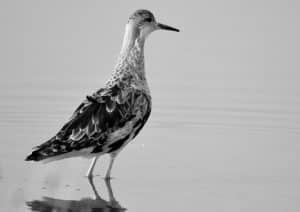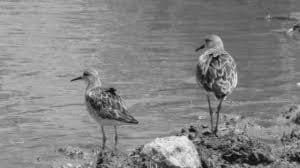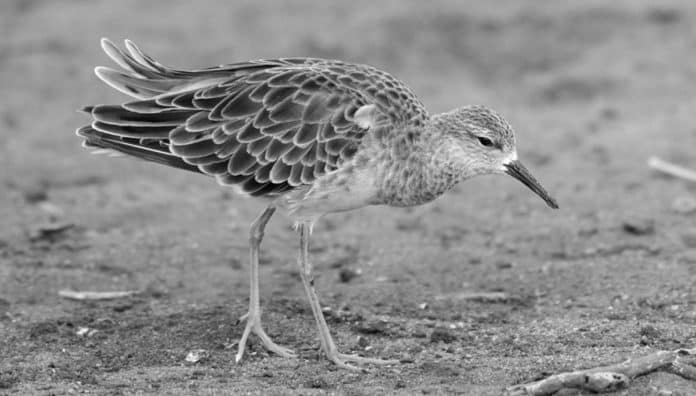Introduction to Tanzania’s wetlands
Tanzania is renowned for its breathtaking landscapes and diverse wildlife, but few people are aware of the country’s wetland marvels. These pristine habitats are home to a wide array of species, including the fascinating ruff in Tanzania. In this comprehensive guide, we will delve into the world of Tanzania’s wetlands, explore the importance of ruffs, discuss conservation efforts, reveal the best places to spot these magnificent birds, provide photography tips, highlight other wildlife species found in the wetlands, and emphasize the significance of responsible tourism practices.
What are ruffs and why are they important in Tanzania?

Ruffs (Calidris pugnax) are medium-sized wading birds that belong to the sandpiper family. These charismatic creatures are characterized by their distinct breeding plumage and elaborate courtship displays, which make them a fascinating species to observe. Tanzania is a crucial stopover for ruffs during their long-distance migration from their breeding grounds in the Arctic to their wintering grounds in Africa. The country’s wetlands provide the perfect feeding and resting grounds for these birds, allowing them to refuel and continue their arduous journey.
The ecological significance of Tanzania’s wetlands
Tanzania’s wetlands are not only important for ruffs but also for the overall health of the ecosystem. These habitats serve as crucial breeding grounds, feeding areas, and resting places for a myriad of wildlife species. Wetlands act as natural filters, purifying water and improving its quality. They also serve as carbon sinks, helping to mitigate climate change. Furthermore, wetlands support a diverse array of plants and animals, contributing to the overall biodiversity of the region. Preserving these habitats is essential for the long-term sustainability of Tanzania’s natural heritage.
Ruff migration patterns in Tanzania
Ruffs undertake one of the most remarkable migrations in the avian world, traveling thousands of miles each year. In Tanzania, the ruffs can be observed during the months of September to November and March to April. During the breeding season, male ruffs develop their elaborate breeding plumage and engage in fierce territorial battles to attract females. Once the breeding season is over, the ruffs embark on their migration, journeying from the Arctic through Europe and Africa. Tanzania’s wetlands provide a crucial stopover point for these exhausted travelers, where they can rest and replenish their energy reserves.
Conservation efforts for ruffs in Tanzania

Recognizing the importance of ruffs and their wetland habitats, Tanzania has implemented several conservation initiatives. The government has designated protected areas and national parks to safeguard these precious habitats. Additionally, local and international organizations are working together to raise awareness about the ecological significance of wetlands and the need for their conservation. These efforts include monitoring ruff populations, conducting research on their behavior and ecology, and implementing measures to mitigate the threats they face, such as habitat loss and climate change.
Best places to spot ruffs in Tanzania’s wetlands
Tanzania offers a plethora of wetland areas where one can spot ruffs in their natural habitat. Lake Manyara National Park is a fantastic location to observe these birds, as it is a designated Ramsar Site and home to a diverse range of wetland species. The Selous Game Reserve, Africa’s largest protected area, also boasts wetlands where ruffs can be spotted. If you’re looking for a more off-the-beaten-path experience, the Kilombero Valley Wetlands provide a haven for ruffs and other water-loving species. These locations offer unique opportunities to witness the mesmerizing courtship displays and feeding behaviors of ruffs.
Photography tips for capturing ruffs in their natural habitat
Capturing the beauty of ruffs in their natural habitat can be a rewarding experience for any wildlife photographer. To increase your chances of getting the perfect shot, it’s essential to be patient and observe their behavior. Ruffs are particularly active during the early morning and late afternoon, so plan your photography sessions accordingly. Using a telephoto lens will allow you to capture the intricate details of their plumage and courtship displays. Additionally, paying attention to lighting conditions, composition, and using a tripod can greatly enhance the quality of your photographs.
Other wildlife species found in Tanzania’s wetlands
While ruffs are undoubtedly the stars of Tanzania’s wetlands, these habitats are also home to a plethora of other wildlife species. From majestic elephants and hippos to colorful kingfishers and flamingos, the wetlands offer a diverse range of fauna to admire. Crocodiles and monitor lizards can be spotted basking in the sun along the water’s edge, while a variety of waterfowl grace the lakes and rivers. Tanzania’s wetlands provide a rich tapestry of biodiversity, making them a must-visit destination for nature enthusiasts.
Responsible tourism practices in Tanzania’s wetlands

As visitors to Tanzania’s wetlands, it is our responsibility to ensure that our presence has a minimal impact on the delicate ecosystems. Respect the wildlife by observing from a safe distance and refraining from feeding or disturbing them. Follow designated trails and respect any restrictions put in place to protect the wetlands. Dispose of waste properly and avoid using single-use plastics. By practicing responsible tourism, we can contribute to the long-term preservation of Tanzania’s wetland marvels and the species that depend on them.
Conclusion: Celebrating the beauty and diversity of Tanzania’s wetland marvels
Tanzania’s wetlands are a hidden gem, teeming with life and offering a unique sanctuary for countless species, including the enchanting ruff. By understanding the ecological significance of these habitats, appreciating the efforts made to conserve them, and practicing responsible tourism, we can ensure that future generations will be able to marvel at the beauty and diversity of Tanzania’s wetlands. Let us celebrate and protect these natural wonders, so that they may continue to inspire and captivate us for years to come.

































